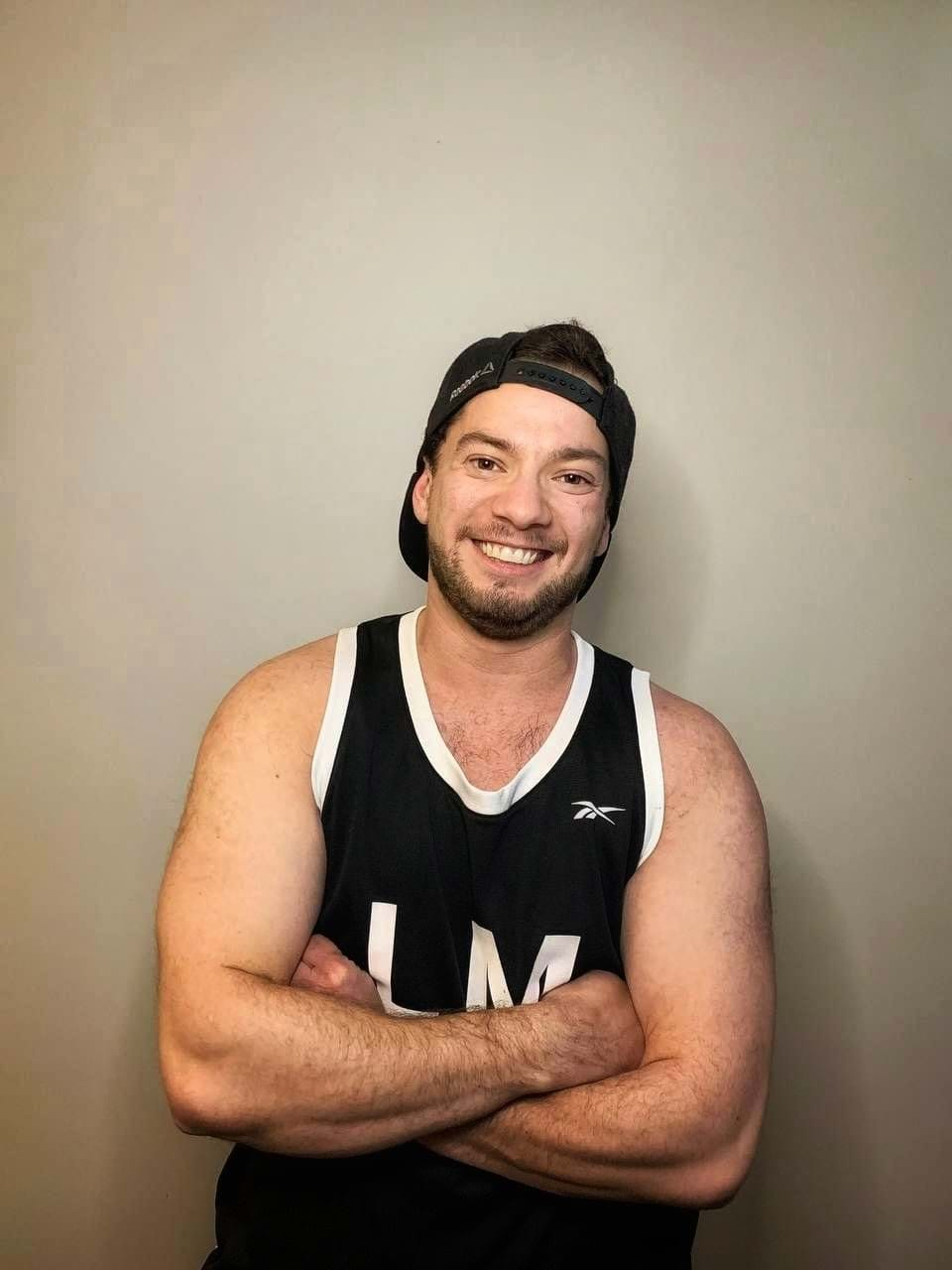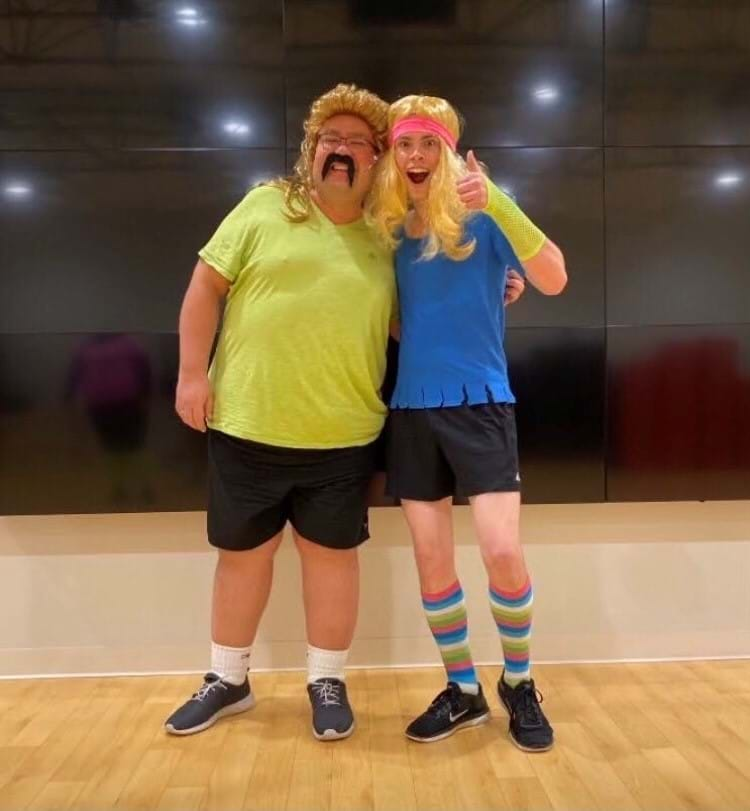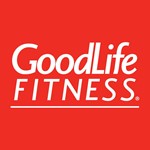Pride Month is a chance to show some love to LGBTQ2+ people and to celebrate all gender identities and sexual orientations. It’s a time to learn more about people who identify as LGBTQ2+ so we can act daily to help create a more accepting and inclusive society for everyone.
We wanted to hear more about the experiences of fitness professionals who identify as LGBTQ2+ and how they feel about being part of Canada’s fitness industry. We reached out to two GoodLife Associates - Emmett Lowry and Jamie Wieland – to hear more about their experiences and where they see the fitness industry moving to better support LGBTQ2+ people.

Emmett Lowry has been an Associate with GoodLife for nine years. Emmett teaches RPM and Les Mills Core group fitness classes, and works full-time as a high school teacher.

Jamie Wieland has worked at GoodLife for nearly 13 years, in many different roles including Motivator, Fitness Advisor and Group Support Specialist. Jamie loves attending Group Fitness classes and is an avid Zumba participant.
Here’s what they had to say...
Q: What does LGBTQ2+ mean to you?
EMMETT - The thing about that acronym is that it’s constantly evolving to reflect the people it's meant to represent. Our understanding of ourselves and our community, and who we should be recognizing is evolving as well. In my mind, when we say 2SLGBTQ+ or LGBTQ2+ we are including two-spirited people and welcoming First Nations voices. It’s more or less impossible to find an acronym that fairly reflects the beautiful variety of gender identities and sexual orientations that a person can be, so when we use acronyms and colloquialisms, it’s important to remember there can never be a true standard, or one-size-fits-all term!
JAMIE - The LGBTQ2+ acronym serves an important purpose. It’s intended to be an all-encompassing way to recognize different gender identities and sexual orientations.
Q: What/How is it to be LGBTQ2+ in the fitness industry?
EMMETT - The concept of personal fitness is an excellent metaphor for trans and queer equity in this industry. When it comes to building more equity in the fitness industry, I believe the work is ongoing. We should continue striving to build on successes, just like how we build on progress in our personal fitness journeys. In other words, the work is never truly over. In my lifetime, I have seen fitness spaces become significantly safer for trans and non-binary people, but that work needs to continue.
Many gym environments still implicitly and inherently uphold gender norms of what a body should be. That creates unrealistic and dangerous standards for all people, and specifically affects trans and non-binary people, who are classified as other. It took me a long time to feel safe and comfortable in fitness spaces, and even now there are times when I don’t feel as welcome because of the culture of a space.
JAMIE - I find the fitness industry to be very heteronormative. As a result, I haven’t always felt comfortable in gyms and fitness-related spaces. In my experience, if someone stares at me or whispers, I catch myself wondering “Is it because they’re making a judgment about my fitness level or my sexual orientation? Is it because of what I am wearing? Are they concerned I’m going to hit on them?” I also find that some people will avoid my workout area, or not change near me in the change room.
Q: How has fitness helped your experience as a member of the LGBTQ2+ community?
EMMETT - This is a difficult question to answer. My transition and my fitness journey are absolutely linked. I'm still learning to love my body for what it is and what it can do, instead of trying to force myself into Euro-centric and cis-normative standards of what a body "should" be. I’m humbled to be a trans person in fitness who can wield my tiny scepter of influence to help create a path for other trans people who deserve a space here as well.
Q: What would GoodLife and the fitness industry need to do to help the community?
EMMETT - When the policy and culture of a fitness space is safe and welcoming for transgender and non-binary bodies, this creates a better environment for everybody. Any change in culture has to be intersectional in its scope for this to be true. As a fitness leader, Goodlife has an opportunity to set the standard for a safe and inclusive fitness experience for everyone. But it’s more than just waving flags, asking for pronouns and creating safe washroom access. It’s a fundamental culture change to see the inherent worth of every human being and to centre that truth in every action the company takes.
JAMIE - To encourage a culture of inclusiveness, it’s important to demonstrate allyship with small things like Pride flags or preferred pronouns on nametags. It’s even more important and impactful to provide ongoing opportunities for staff to learn about LGBTQ2+ people and how to show support, so everyone can feel safe and comfortable. I’m grateful for the important work GoodLife’s Diversity, Equity & Inclusion Team is doing to make these kinds of changes.
Did you know?
- LGBTQ2+ stands for Lesbian, Gay, Bisexual, Transgender, Queer, Two-Spirit. The plus sign is an all-encompassing symbol for all the different identities not listed in the acronym (pansexual, non-binary, intersex, and more).
- Pride started as a protest. In June 1969, New York City’s LGBTQ2+ population rose up against discrimination after police raided popular gay bar The Stonewall Inn. These riots inspired the modern gay rights movement around the world, including in Canada.
- In Canada, gay rights activists took to the streets in 1973 to demand equal rights for all, inspiring nation-wide LGBTQ2+ rights events in Vancouver, Saskatoon, Winnipeg, Toronto, Ottawa and Montreal.
- Police raids on four Toronto bathhouses on February 5, 1981 and the arrest of nearly 300 men led to the first Lesbian and Gay Pride Day in Toronto. Since then, Pride events have been held annually in cities across the country
- Although progress has been made, including the decriminalization of homosexuality in 1969 and legalization of gay marriage in 2005, people who are LGBTQ2+ continue to experience discrimination and violence. This is particularly true for racialized, trans and non-binary people.
GoodLife supports our LGBTQ2+ Associates and Members, and others who identify as LGBTQ2+. We are committed to creating a welcoming, inclusive space for everyone to live a healthy, active good life. GoodLife Associates across Canada will wear rainbow wristbands in June (and after) to recognize Pride Month and celebrate LGBTQ2+ people.
